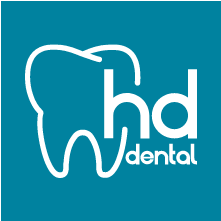Direct fillings
Direct fillings are put into the tooth after the decay is removed. They are made in just one visit. However, they don’t live up to the expectations in every aspect.
- Composite: Dental composites, also called white fillings, are a mixture of plastic resin (only 20-30%) and powdered glass or ceramics. They are put into the prepared tooth in a soft state and then hardened by light exposure.
Advantages Disadvantages immediately usable gaps develop along the edges of the filling not temperature sensitive limited durability (initially) good aesthetics discoloration relatively low cost can cause an allergy - Amalgam: This is still the most used filling material in the world. It is composed of a powdered silver-tin-zinc alloy which is then mixed with mercury and pushed into the tooth.
Advantages Disadvantages longevity unattractive aesthetics antibacterial effect initial temperature sensitive easy to work with may cause electric tension in your mouth low cost mercury leakage
Amalgam toxicity is a controversial and highly debated issue. While not every amalgam filling should be removed without any deliberation, there are many good reasons to replace them with other materials of superior quality.
Indirect fillings
Indirect fillings, or inlays, are made in the dental laboratory, and the procedure takes two visits. The dentist makes an impression from the carefully prepared tooth first. Based on this impression the dental technician creates the inlay which is then placed and bonded to the tooth by the dentist during a second visit.
- Gold inlay: Gold is still considered the best filling material. Well made gold inlays can last decades and can even be considered jewelry. A lot of people like to wear shiny metal in their pierced ears, around their neck and on their fingers but for some reason don’t like the same gold metal in their teeth.
| Advantages | Disadvantages |
|---|---|
| can be fitted very well | appearance unacceptable for some |
| longevity | high cost |
| Bio-compatibility | initially temperature sensitive |
| antibacterial effect |
- Porcelain inlay: Inlays made of ceramic show relatively high durability and outstanding aesthetics at the same time. This is the main reason for being the most popular choice of long-term solutions.
| Advantages | Disadvantages |
|---|---|
| excellent aesthetics | risk of breakage |
| Bio-compatibility | relatively high cost |
| long durability |
social
media
media

 AT: +43 676 933 3778
AT: +43 676 933 3778

